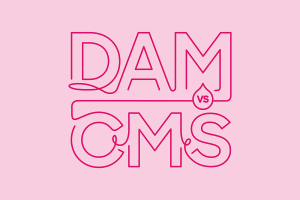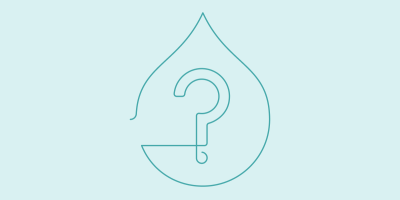Understanding DAM vs. CMS

Collection :
It’s easy to confuse digital asset management (DAM) systems and content management systems (CMS). That’s largely because the words “content” and “digital assets” are often used interchangeably. But each term can have quite different meanings to marketing teams. That overlapping language isn’t likely to change, so understanding DAM vs. CMS starts with knowing what each type of system does and how they can work together.
A CMS is responsible for managing content on your website and a DAM system manages content for your whole organization allowing for distribution across multiple channels. DAM systems can publish and manage content on your website too (and a good one does) but that’s not its only function. Let’s start with a clear definition of each and then take a close look at the differences between DAM and CMS tools.
Defining DAM and CMS
Here are some simple definitions of DAM and CMS:
|
Acquia defines a CMS as: "A content management system (CMS) is software that stores many content types, manages that content through its lifecycle, and publishes it to your website and other digital channels." Acquia defines DAM as: “Digital asset management (DAM) is the practice of administering, organizing, and distributing media files. DAM software enables brands to develop a library of photos, videos, graphics, PDFs, and templates that are easy to search and ready to deploy.” |
To build on those definitions, let’s isolate the main difference between the two and outline some key features of each.
What is the difference between CMS and DAM platforms?
When you’re talking about a CMS, you’re talking about website content, think landing and product pages. When you talk about DAM, you’re talking about both the practice of managing company-wide digital assets and software that manages and deploys your whole library of content to multiple channels (including your website).
Often, CMS and DAM platforms are used in tandem to support business goals. Understanding the key features of each helps tease out the difference between the two in more detail and highlight why each likely has a role in your content management strategy.
Key features of a DAM system
Your DAM system gives you a central source of truth for digital assets that’s easy to manage, user friendly, and built to scale. DAM systems can manage all kinds of digital assets from images and videos to PDFs and word docs, in addition to streamlining workflows. It can also convert files for reuse, automate manual content processes, and make it easy for global teams to find any asset they need.
Here’s a shortlist of the key features of any DAM system:
- Organization of content in one system
- Secure self-serve access
- Publishing and distribution of up-to-date assets
- Ability to transform and reuse content
- Tools to monitor content effectiveness
- Automation of manual processes
Key features of a CMS
Any CMS should give you the ability to publish, remove, and edit content on your website. It can manage everything from your product images and videos to your blog posts and homepage hero images. A CMS can also handle SEO copy, track web page versions, and manage user roles to give team members access to edit and use the right content.
Here’s a shortlist of the key features of any CMS:
- Ability to store, publish, and edit website content
- User permissioning to access control
- Web page builder or page templates
- Searchable content library
- Option to write, edit, and publish blog posts
How to leverage DAM and CMS
While there are overlapping features, each system provides unique benefits and can be even more powerful when used together. Combining your DAM system and CMS keeps all of your digital assets current and consistent in one location. Using a DAM solution as a central source of truth and integrating it with web content channels like a CMS or web content management (WCM) system, can improve content organization, streamline e-commerce operations, and increase collaboration between global teams.
Other benefits of combining a DAM and CMS platform are:
- Version control. Add a new version of an asset in the DAM system and have it updated anywhere it’s shared or embedded in the CMS.
- Work from a single user interface (UI). Keep CMS users in one system by being able to access DAM system assets from the CMS UI.
- System syncing. Automatic syncing keeps assets up to date across systems from the DAM platform’s centralized location.
By combining a CMS and DAM solution you can scale your content operations with the needs of your assets, teams, and brands.
Getting started with DAM
Even though DAM and CMS tools are different, they’re complementary systems and an important part of your technology ecosystem. Leveraging the two together will help teams scale processes and get more out of the digital content lifecycle.
Interested in our DAM or CMS solution? Request, watch, or click through a demo of either — or both — today to see how we can help streamline your content operations to improve brand consistency.
Note: This article was originally published on Widen.com.


